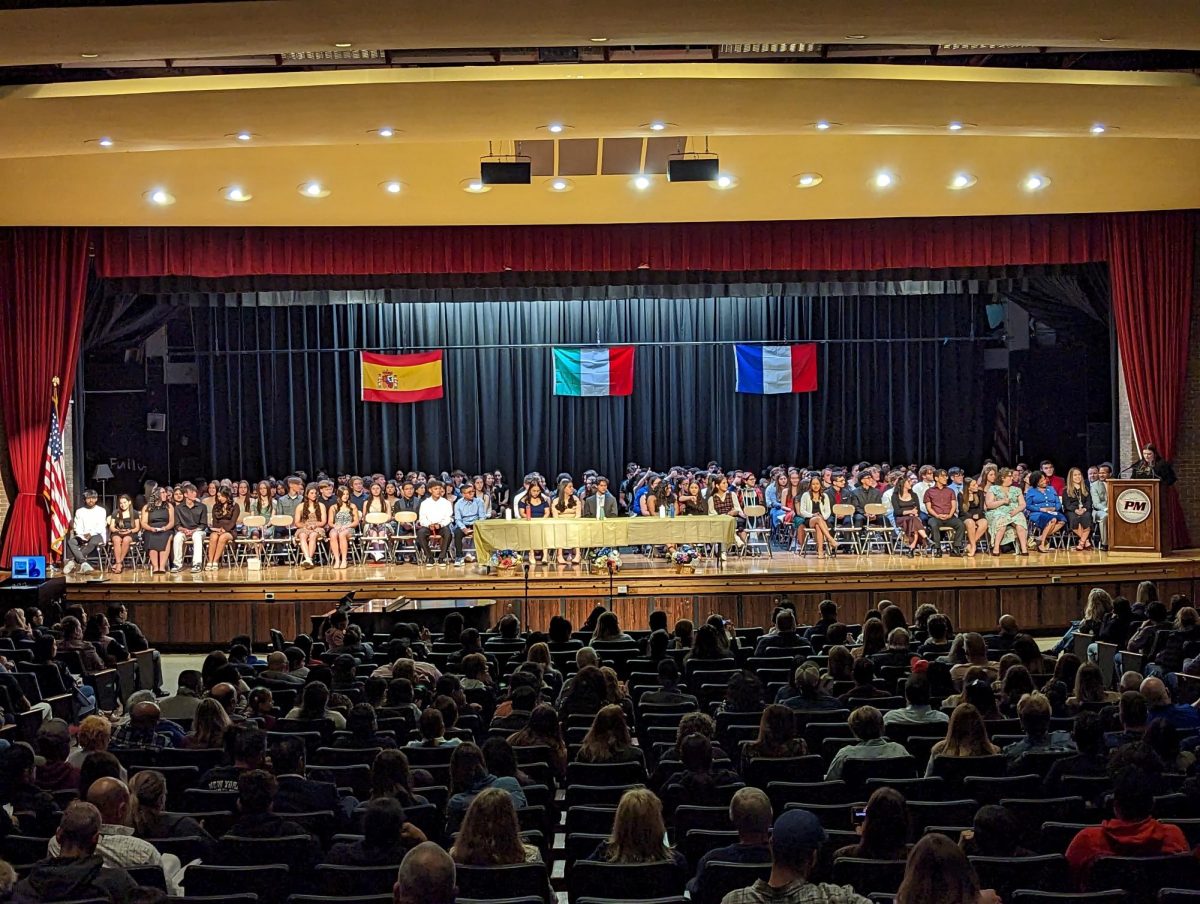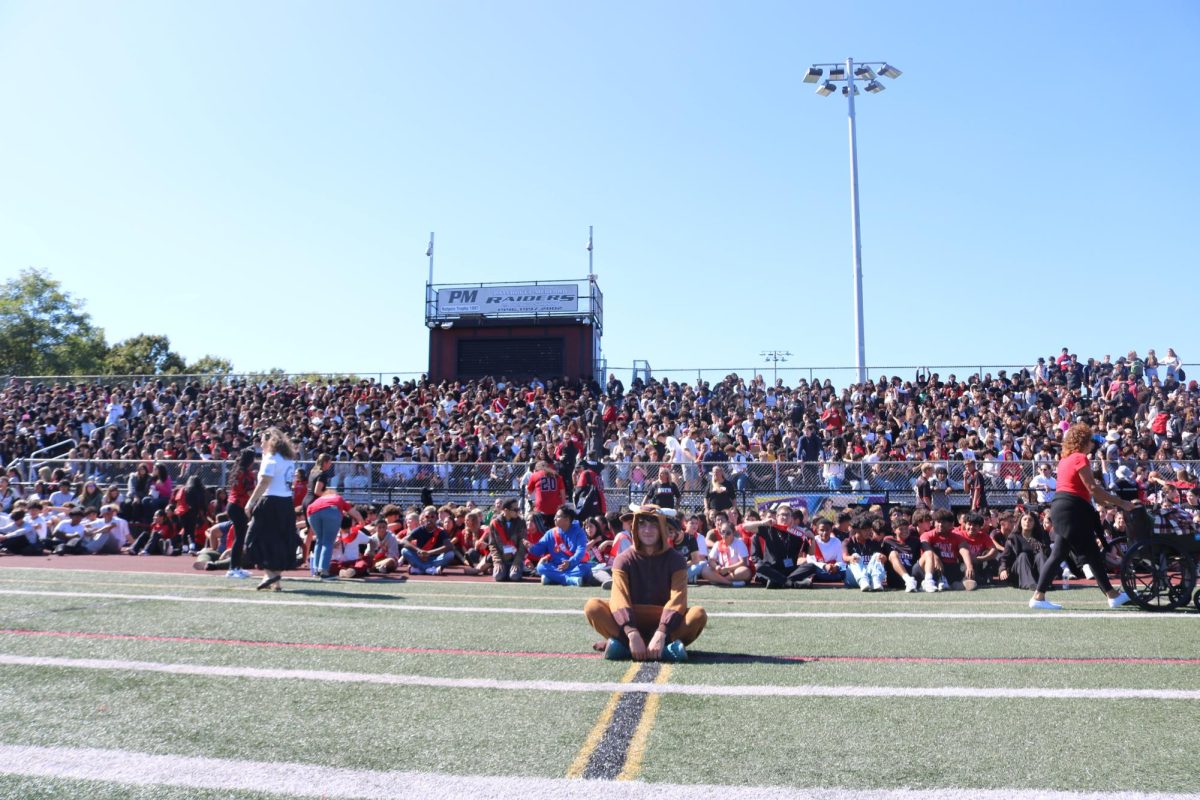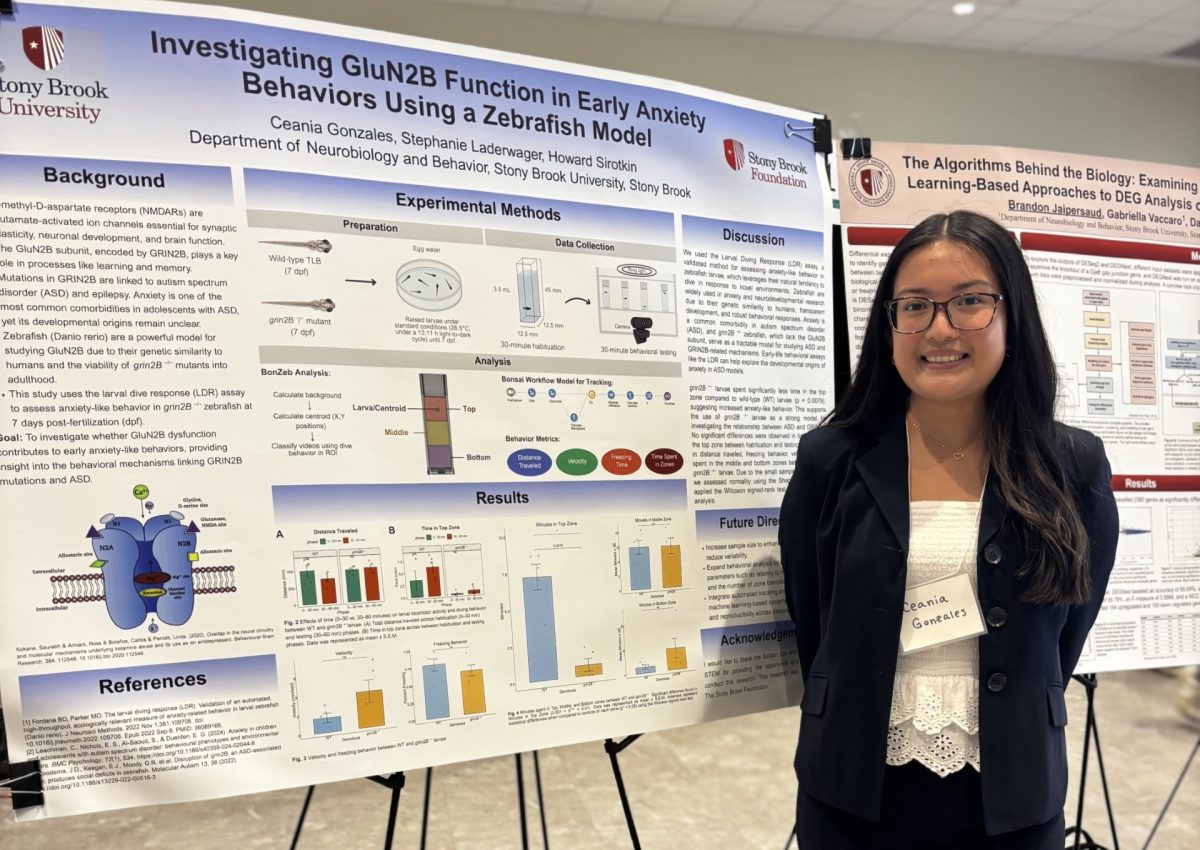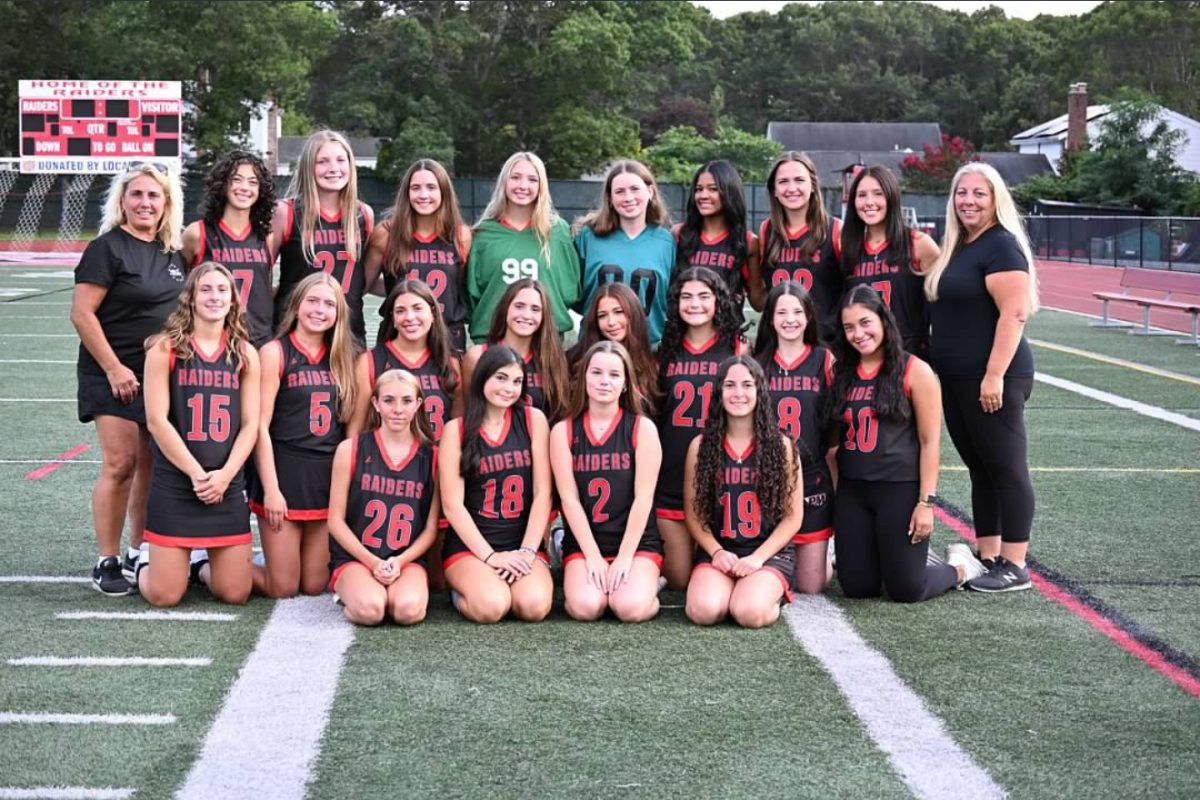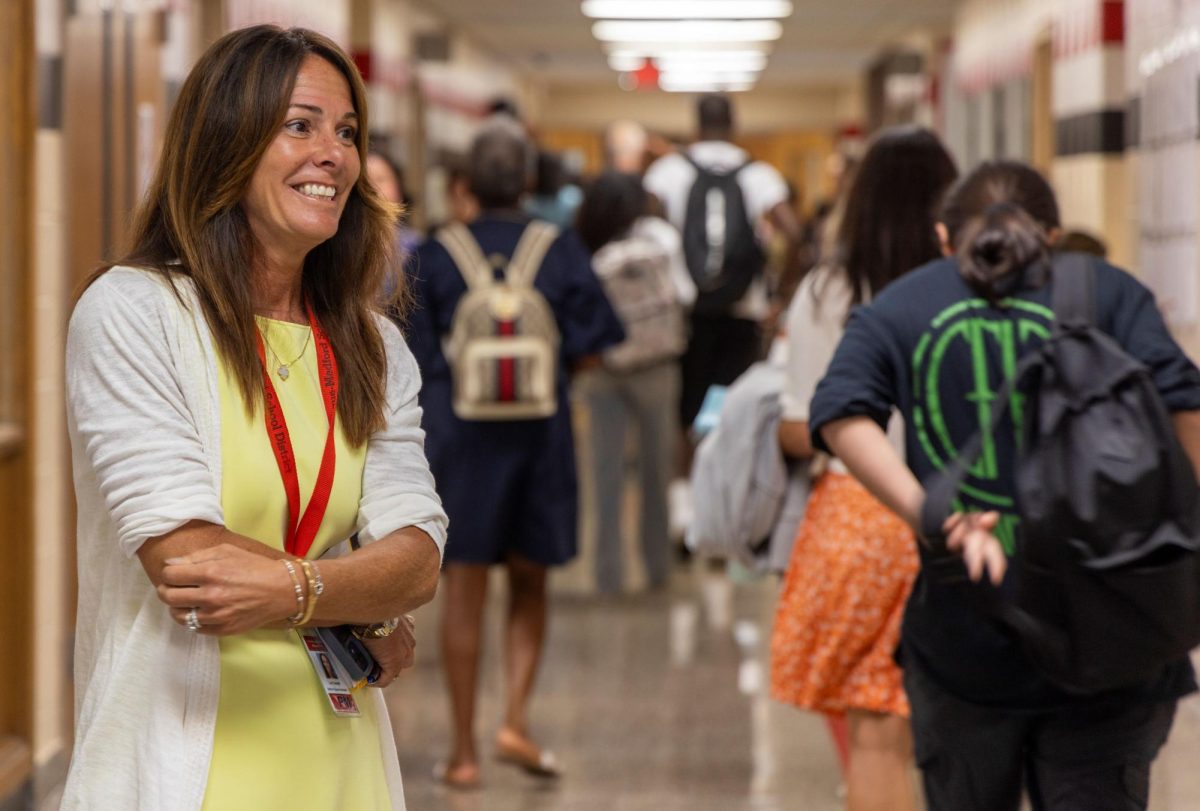It’s that time of year again, sessions for the Seal of Civic Readiness and the Seal of Biliteracy have begun at PMHS. With a total of about 300 applicants, there must be something special about earning a Seal.
Although the Seals are only open to 12th graders, it’s important for underclassmen to start thinking about if they’d like to pursue the Seal of Civic Readiness or Seal of Biliteracy, or even both! But before you decide, here’s what you should know about them.
Two of Patchogue-Medford’s Academic Directors share information to let us learn more about the Seals.
Catherine Carella-Dean, Director of Second Humanities, was an English teacher for twenty-two years and also served as an assistant principal in another school district before becoming an administrator in Patchogue-Medford. Her love for reading grew into her love for teaching, which led her to the realization of her want to impact students on a greater scale.
“What I had envisioned was exactly what happened. Now, I help guide teachers and students and I oversee up to about 4,000 students indirectly and almost 100 teachers by supervising English and Social Studies at the secondary level,” she says.
Michelle Marrone, Director of ENL, Bilingual Education and World Languages 6-12, was also a teacher in a school district further out East, teaching ENL/Bilingual math for students in grades 9-12.
“Actually, I originally thought I was going to be a music teacher,” she recalls, “and then I really fell in love with learning languages. So, I did my undergrad for Spanish education and then in the process of trying to find a teacher position, I started my master’s degree in teaching English as a second language (ESL) and fell in love with that and that’s been my pathway ever since.”
While the Seal of Civic Readiness is only in its second year at PMHS and the Seal of Biliteracy is now in its sixth year, there is still so much to know about both. With the help of our directors, here are a few answers to some frequently asked questions.
What are the Seals of Civic Readiness and Biliteracy?
Although it is currently only available to five states (Arizona, California, Georgia, New York, and Virginia), the Seal of Civic Readiness is in the process of being implemented nationwide.
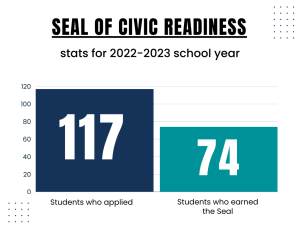
According to New York State Education Department, “The Seal of Civic Readiness is a formal recognition that a student has attained a high level of proficiency in terms of civic knowledge, civic skills, civic mindset, and civic experiences.”
The Seal also shows various skills a student has such as an understanding of commitment to participatory government, the ability to complete an action project in civics or social justice and recognizes the value of civic engagement and scholarship.
The Seal of Biliteracy is nationwide and was established in New York as of 2013. Based on The Seal of Biliteracy, the New York State Seal of Biliteracy is meant to “recognize high school graduates who have attained a high level of proficiency in listening, speaking, reading, and writing in one or more languages in addition to English.”
“The Seal of Biliteracy is essentially a seal on your diploma, and it allows for employers, universities, colleges, anything post-secondary they can see you can be biliterate in English and Spanish, French, Italian, in another language. It gives you almost a step-up from your peers because you have this ability to read, write, speak, and listen in more than just English,” Marrone adds.
How do I earn the Seal of Civic Readiness or Seal of Biliteracy?
Both Seals have a point system students can work towards to earning a Seal. In many cases, most students already have some points from taking a social studies, English, or world language class in their four years of high school.
Specifically, for the Seal of Civic Readiness, students look at all of their accomplishments, activities, community service projects or events between 6th grade up to 12th grade. This gives students ample time to build up their resume for not only college, but also gain points needed for the Seal.
On the other hand, for the Seal of Biliteracy, while most students also gain points from their English and world language classes over the years, almost every student needs to give a presentation at the end of the year to show their proficiency in their second language. The presentation comes from a year-long project students work on with their mentors, usually researching a topic of their choice and showing their ability to read, speak, and write in that language.
What are my chances of actually earning a Seal?
Ultimately, the chances of you earning a Seal are in your hands. In past years, many seniors apply for a Seal but not all walk on stage wearing the medal or having the seal on their diploma. Since it is only year #2 for the Seal of Civic Readiness being offered at PMHS, the program is still relatively new.
“This year, I have 220 applicants and we’ll see, I’m hoping all 220 applicants get it. We have very good numbers in our favor, and I think stories like this, the meeting we had last week, mentors helping out, kids talking about it, will help our numbers go up. We have a graduating class of over 600 kids, so if we have 200 kids graduating with a Seal, that’s a pretty good statistic only two years out,” states Carella-Dean.
On the other hand, the Seal of Biliteracy is in its 6th year at PMHS. Marrone says, “Every year it’s becoming more popular and more well-known. This year we had a little more than 100 students apply, hopefully all 100 are eligible.” In the 2022-2023 school year, over half of applicants earned their Seal.
Why should I earn a Seal?
There is no doubt that both the Seal of Civic Readiness and the Seal of Biliteracy look great for college applications. Of course, as a high school senior, college applications are the only thing on your mind, but both Seals go much further than college.
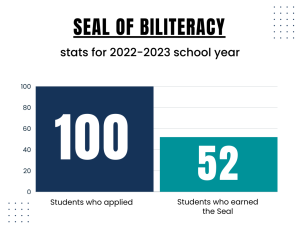
“I think it’s a point of pride for their acknowledgement for their acknowledgement of their commitment of not only themselves and their understanding of how to engage civic discourse, but really what they’ve done for their community,” says Carella-Dean. Beyond community service, the Seal of Civic Readiness also acknowledges working students and allows them to use their work hours as points under work-based learning experiences.
“Just like your high school diploma, the diploma that you get in your hand is just a physical token, but it really symbolizes all the hard work and commitment that a student has dedicated for thirteen years, so I liken it to that. Yes, it is a “medal” but the symbolism behind that medal is a deep commitment to community service, civic mindfulness, and social students and humanities achievement,” she notes.
Carella-Dean then continues, “As a director, it is very rewarding to see students gain the competencies in civic knowledge, mindset, and action and in a sense, “leave the nest” having those competencies under their belt so they can go onto the world to do great things.”
For the Seal of Biliteracy, knowledge in a second language is highlighted and the skills acquired and shown in the Seal benefit students beyond graduation, specifically in the workforce.
“If you truly want to be marketable in your field, the Seal will do that and be able to show your employer that you can speak fluently more than one language,” says Marrone.
For example, in a Essential Bilingual Employment Statistics report for 2023, the demand for workers who speak both English and Spanish has increased by 10% between the years 2010 and 2015. Similarly, Georgia State University’s Global Language and Skies program estimates, “Bilingual employees typically earn $1.22 to $2.33 more per hour than monolingual employees.”
“I understand in the beginning it just looks like a seal or a medal, but I think in the endgame, you’re able to show you can not only communicate but understand the cultures of different populations of people as well,” Marrone states.
Whether you are a junior looking to build your college applications or a freshman who overheard your teacher talking about the Seal, both the Seal of Civic Readiness and the Seal of Biliteracy will enhance your skills as a student and an individual in society. For all current seniors who are pursuing their seals, the Red and Black wishes you the best of luck and we hope this motivates you to keep up the hard work in earning your seal.

